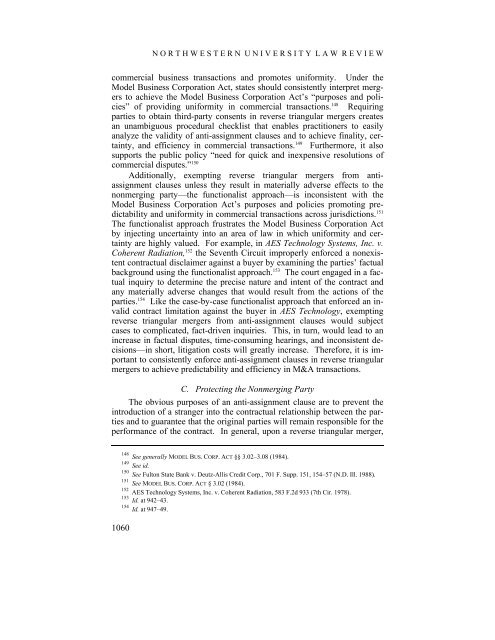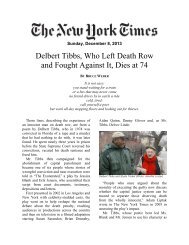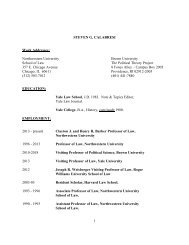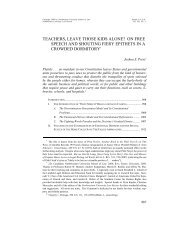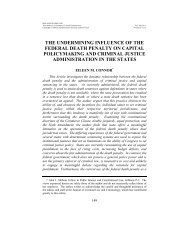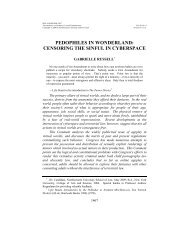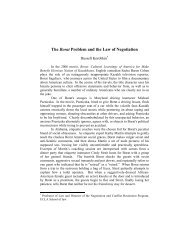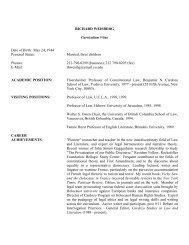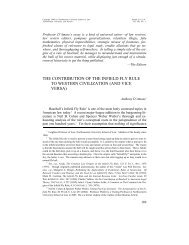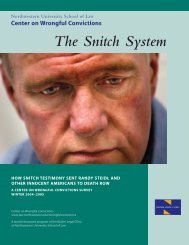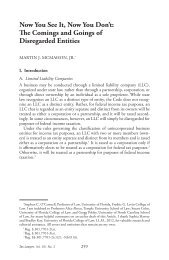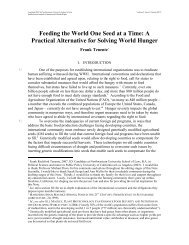The Reverse Triangular Merger Loophole and Enforcing Anti
The Reverse Triangular Merger Loophole and Enforcing Anti
The Reverse Triangular Merger Loophole and Enforcing Anti
Create successful ePaper yourself
Turn your PDF publications into a flip-book with our unique Google optimized e-Paper software.
1060<br />
N O R T H W E S T E R N U N I V E R S I T Y L A W R E V I E W<br />
commercial business transactions <strong>and</strong> promotes uniformity. Under the<br />
Model Business Corporation Act, states should consistently interpret mergers<br />
to achieve the Model Business Corporation Act’s “purposes <strong>and</strong> policies”<br />
of providing uniformity in commercial transactions. 148 Requiring<br />
parties to obtain third-party consents in reverse triangular mergers creates<br />
an unambiguous procedural checklist that enables practitioners to easily<br />
analyze the validity of anti-assignment clauses <strong>and</strong> to achieve finality, certainty,<br />
<strong>and</strong> efficiency in commercial transactions. 149 Furthermore, it also<br />
supports the public policy “need for quick <strong>and</strong> inexpensive resolutions of<br />
commercial disputes.” 150<br />
Additionally, exempting reverse triangular mergers from antiassignment<br />
clauses unless they result in materially adverse effects to the<br />
nonmerging party—the functionalist approach—is inconsistent with the<br />
Model Business Corporation Act’s purposes <strong>and</strong> policies promoting predictability<br />
<strong>and</strong> uniformity in commercial transactions across jurisdictions. 151<br />
<strong>The</strong> functionalist approach frustrates the Model Business Corporation Act<br />
by injecting uncertainty into an area of law in which uniformity <strong>and</strong> certainty<br />
are highly valued. For example, in AES Technology Systems, Inc. v.<br />
Coherent Radiation, 152 the Seventh Circuit improperly enforced a nonexistent<br />
contractual disclaimer against a buyer by examining the parties’ factual<br />
background using the functionalist approach. 153 <strong>The</strong> court engaged in a factual<br />
inquiry to determine the precise nature <strong>and</strong> intent of the contract <strong>and</strong><br />
any materially adverse changes that would result from the actions of the<br />
parties. 154 Like the case-by-case functionalist approach that enforced an invalid<br />
contract limitation against the buyer in AES Technology, exempting<br />
reverse triangular mergers from anti-assignment clauses would subject<br />
cases to complicated, fact-driven inquiries. This, in turn, would lead to an<br />
increase in factual disputes, time-consuming hearings, <strong>and</strong> inconsistent decisions—in<br />
short, litigation costs will greatly increase. <strong>The</strong>refore, it is important<br />
to consistently enforce anti-assignment clauses in reverse triangular<br />
mergers to achieve predictability <strong>and</strong> efficiency in M&A transactions.<br />
C. Protecting the Nonmerging Party<br />
<strong>The</strong> obvious purposes of an anti-assignment clause are to prevent the<br />
introduction of a stranger into the contractual relationship between the parties<br />
<strong>and</strong> to guarantee that the original parties will remain responsible for the<br />
performance of the contract. In general, upon a reverse triangular merger,<br />
148<br />
See generally MODEL BUS. CORP. ACT §§ 3.02–3.08 (1984).<br />
149<br />
See id.<br />
150<br />
See Fulton State Bank v. Deutz-Allis Credit Corp., 701 F. Supp. 151, 154–57 (N.D. Ill. 1988).<br />
151<br />
See MODEL BUS. CORP. ACT § 3.02 (1984).<br />
152<br />
AES Technology Systems, Inc. v. Coherent Radiation, 583 F.2d 933 (7th Cir. 1978).<br />
153 Id. at 942–43.<br />
154 Id. at 947–49.


